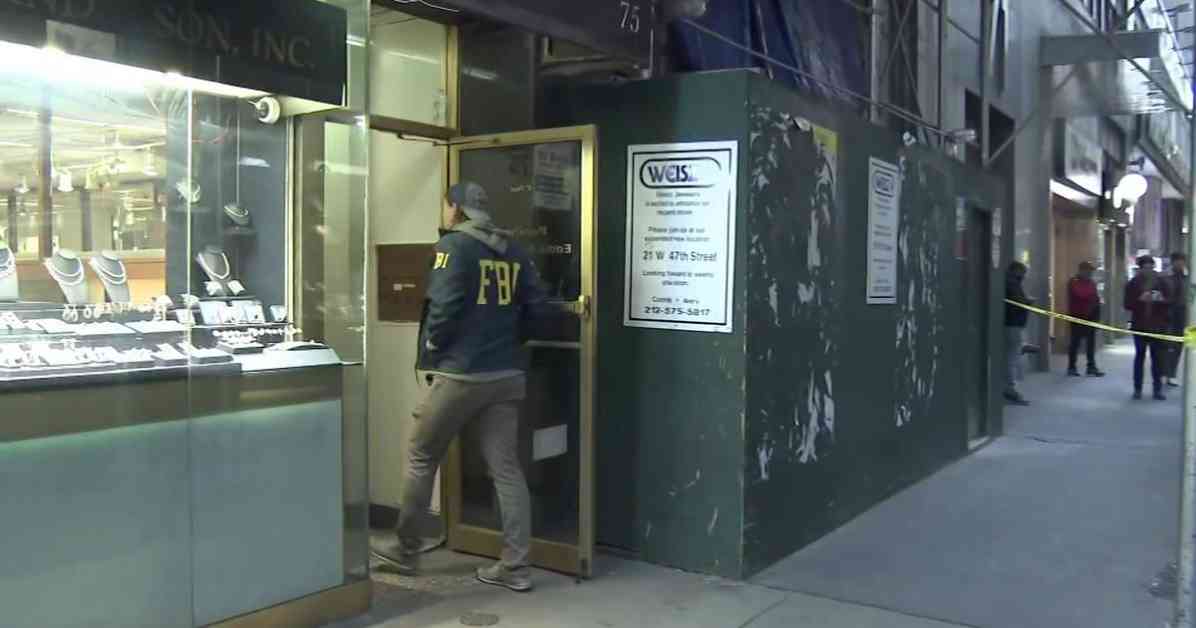Summary:
The burglary of Cincinnati Bengals quarterback Joe Burrow’s home has been linked to a Diamond District raid in New York City. Two suspects, Dmitriy Nezhinskiy and Juan Villar, have been arrested and charged with conspiracy to receive stolen property. The suspects allegedly received stolen luxury goods from organized South American gangs. The FBI executed a search warrant at their pawn shop, recovering large quantities of suspected stolen property. More stolen goods were found at storage units belonging to Nezhinskiy in New Jersey. These arrests follow a series of burglaries targeting multimillion-dollar homes across the country, including those of other NFL players. Prosecutors claim the suspects fueled demand for stolen goods by purchasing and reselling them in their New York City store.
Diamond District Raid Linked to Burglary of Joe Burrow’s Home
In a shocking turn of events, the recent Diamond District raid in New York City has been connected to the burglary of Cincinnati Bengals quarterback Joe Burrow’s home. This revelation sheds light on a larger criminal operation involving stolen luxury goods and organized crime groups operating across the United States. Two individuals, Dmitriy Nezhinskiy and Juan Villar, have been apprehended and charged with conspiracy to receive stolen property, signaling a major breakthrough in the investigation.
The suspects, Nezhinskiy, a 43-year-old from North Bergen, New Jersey, and Villar, a 48-year-old from Queens, are accused of participating in a nefarious scheme to fence stolen goods from high-profile burglaries, including that of Joe Burrow’s residence. These burglaries, orchestrated by South American gangs, have targeted affluent homes nationwide, with Burrow’s home being one of the unfortunate victims.
FBI Raid Uncovers Stolen Goods and Sheds Light on Criminal Operation
Following a comprehensive investigation, FBI agents executed a search warrant at the suspects’ pawn shop located in the heart of the Diamond District. The search yielded a trove of suspected stolen property, including high-end watches and jewelry. Customers of the shop expressed shock at the news, with one recalling witnessing large bags of jewelry being dropped off during a previous visit. The operation’s seemingly legitimate facade crumbled under the scrutiny of law enforcement, leading to the discovery of more stolen goods at Nezhinskiy’s storage units in New Jersey.
This operation, allegedly orchestrated by Nezhinskiy and Villar, played a pivotal role in perpetuating the cycle of stolen goods within the criminal underworld. By providing an illicit market for stolen luxury items, the suspects fueled the demand for burglaries committed by South American theft groups and other criminal crews across the country. Their actions incentivized these organized crime syndicates to continue their meticulous looting schemes against affluent residences and businesses, posing a significant threat to public safety and security.
Expert Insights and Law Enforcement Response
In response to these arrests, U.S. Attorney Durham emphasized the defendants’ role as unlawful brokers in the sale of stolen luxury items, highlighting the detrimental impact of their actions on communities nationwide. FBI Assistant Director in Charge Dennehy underscored the sophisticated nature of the criminal operation, attributing its longevity to the defendants’ willingness to engage in illegal activities for financial gain. The NYPD Commissioner Jessica Tisch reaffirmed the city’s commitment to combating all forms of crime, including organized operations targeting residential properties for the theft and resale of luxury goods.
As the investigation unfolds, the interconnected web of criminal activity continues to unravel, shedding light on the complex network of illicit transactions and underground markets fueling the demand for stolen goods. The arrest of Nezhinskiy and Villar marks a significant milestone in dismantling these criminal enterprises, but the broader implications of their actions underscore the ongoing challenges law enforcement faces in combatting organized crime. The collaboration between federal agencies, local law enforcement, and vigilant community members remains critical in safeguarding communities against the pervasive threat of criminal activity.









